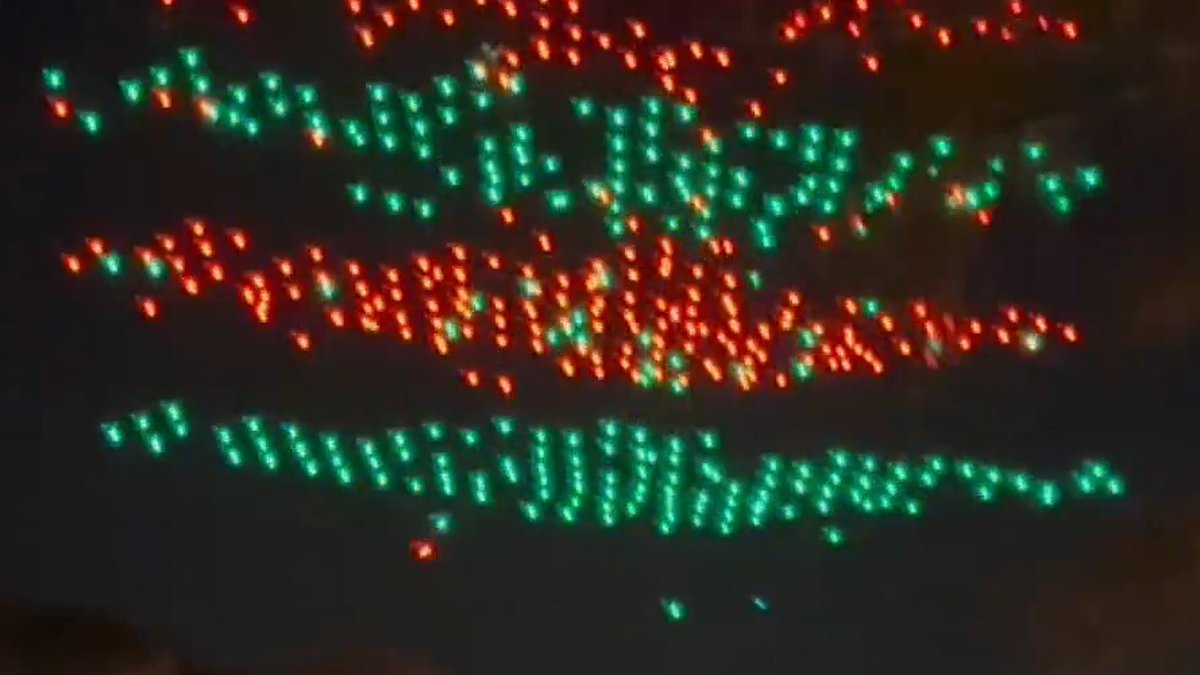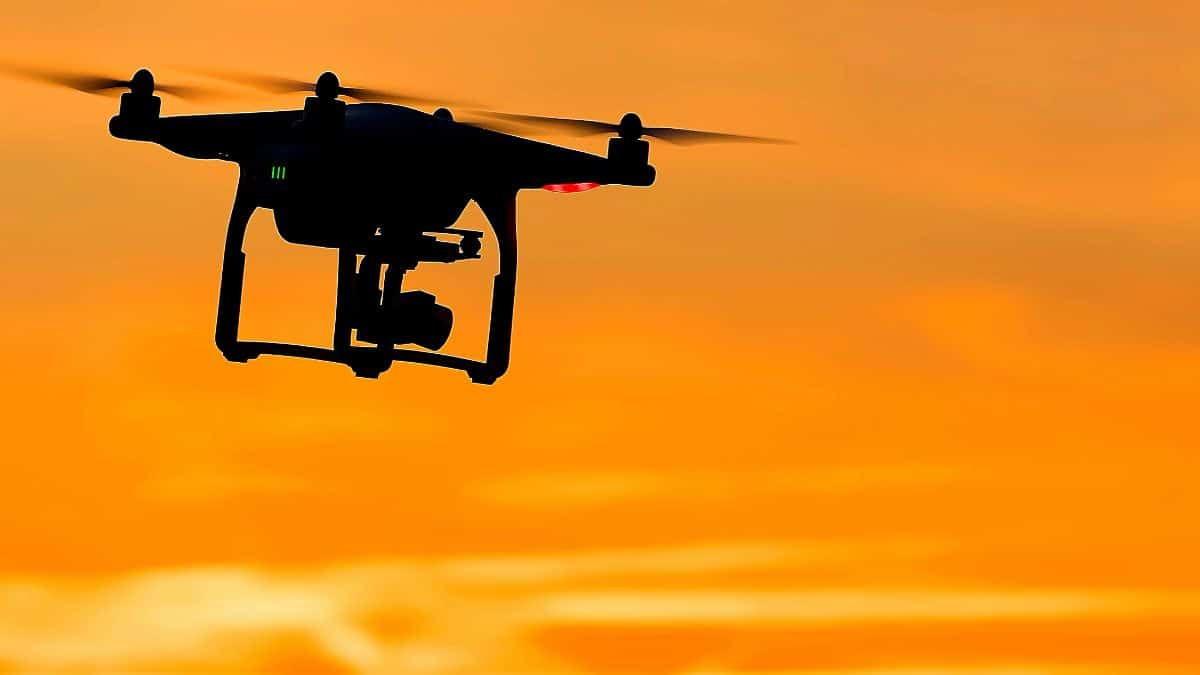Drone crash: It’s a phrase that conjures images of mangled rotors and broken dreams. But understanding why drones crash is crucial for safe and responsible operation. This guide dives into the common causes, from mechanical failures and pilot error to weather conditions and GPS glitches, offering practical advice for prevention and mitigation. We’ll explore real-world case studies to illustrate the consequences and highlight crucial lessons learned.
We’ll cover everything from pre-flight checklists and emergency procedures to the legal and environmental implications of drone accidents. By understanding the risks and implementing appropriate safety measures, we can significantly reduce the likelihood of drone crashes and ensure a safer airspace for everyone.
Drone Crash Causes
Understanding why drones crash is crucial for improving safety and preventing future accidents. This section explores the most common contributing factors, encompassing mechanical issues, environmental influences, pilot error, and technological limitations.
Common Mechanical Failures
Several mechanical failures frequently contribute to drone crashes. These include motor malfunctions (resulting in loss of thrust or control), damaged propellers (leading to instability and loss of lift), faulty electronic speed controllers (ESCs), problems with the flight controller (the drone’s “brain”), and battery issues (such as sudden power loss or overheating).
Weather’s Impact on Drone Stability
Adverse weather significantly impacts drone flight. High wind speeds can overwhelm the drone’s motors, causing it to lose control or be blown off course. Rain and snow can affect visibility, damage components, and increase weight, reducing flight time and stability. Heavy precipitation can also short-circuit electronic components.
Human Error in Drone Accidents
Pilot error remains a significant factor in many drone crashes. Insufficient training, inadequate pre-flight checks (including battery level, GPS signal strength, and propeller integrity), ignoring weather warnings, and poor decision-making during flight all contribute to accidents. Overconfidence and lack of awareness of airspace regulations are also contributing factors.
Drone Model Failure Rates

While precise failure rates across all drone models are difficult to obtain publicly, anecdotal evidence and industry reports suggest variations. Generally, drones with more robust designs, higher-quality components, and advanced safety features tend to have lower failure rates. However, even the most advanced drones are susceptible to failure if subjected to extreme conditions or operator error.
GPS Signal Interference and Loss
GPS signal interference or loss can lead to navigation errors and crashes. Obstructions like buildings, trees, or even heavy weather can weaken or block GPS signals, causing the drone to lose its position awareness and drift. This is particularly critical during autonomous flights or when operating in areas with poor GPS reception.
Drone crashes can be a real bummer, especially if you lose footage or damage your expensive equipment. A strong signal is crucial for reliable drone operation, so consider investing in a good amplificateur wifi to avoid connection dropouts that might lead to a crash. This will help maintain a stable connection and reduce the risk of losing control mid-flight.
Drone Crash Prevention Strategies
Proactive measures are essential to minimize the risk of drone crashes. This section details pre-flight procedures, best practices for flight location selection, and emergency response protocols.
Comprehensive Pre-flight Checklist

A thorough pre-flight checklist is crucial. This should include:
- Inspecting propellers for damage
- Checking battery levels and health
- Verifying GPS signal strength
- Confirming flight controller functionality
- Assessing weather conditions
- Reviewing flight plan and airspace restrictions
Selecting Appropriate Flight Locations
Choosing safe flight locations is paramount. Avoid areas with tall structures, power lines, crowds, and bodies of water. Always check for airspace restrictions before takeoff and maintain visual line of sight with the drone. Consider wind speed and direction, and choose locations that offer ample space for emergency landings.
Emergency Procedures for Malfunctioning Drones
In case of a malfunction, follow these steps:
- Attempt to regain control using the drone’s emergency return-to-home (RTH) function.
- If RTH fails, attempt manual control to land the drone in a safe location.
- If manual control is impossible, prepare for a potential crash and take steps to mitigate damage (e.g., by moving people away from the potential impact zone).
- After landing (or crash), assess the drone for damage and initiate any necessary repairs or replacements.
Recommended Safety Features for Drone Manufacturers
Manufacturers should prioritize incorporating advanced safety features such as redundant systems (e.g., backup motors, flight controllers), improved GPS signal processing, obstacle avoidance systems, and automatic emergency landing mechanisms. Robust geofencing capabilities, limiting flight to pre-defined areas, are also crucial.
Effective Drone Training Programs
Comprehensive training programs are essential for safe drone operation. These programs should cover pre-flight checks, emergency procedures, airspace regulations, and risk management techniques. Hands-on flight practice and simulator training are valuable components.
Drone Crash Investigation and Analysis
Investigating drone crashes involves a systematic process to determine the cause and learn from the incident. This includes data recovery, flight path reconstruction, and evidence analysis.
Drone Crash Investigation Process
A thorough investigation begins with securing the crash site, documenting the scene (including photographs and video), recovering any data from the drone’s flight controller and onboard storage, and interviewing witnesses. Analyzing flight logs, sensor data, and potentially damaged components helps determine the root cause of the accident.
Flight Path Reconstruction
Reconstructing the flight path involves analyzing the drone’s flight log data, GPS coordinates, and other sensor information. Specialized software can be used to visualize the drone’s trajectory, altitude, and speed throughout its flight, helping pinpoint the moment of failure.
Key Evidence in Drone Accident Determination
Key pieces of evidence include the drone itself (for damage assessment), flight logs (for flight parameters and errors), witness testimonies, weather data, and any video or photographic evidence captured during the flight or at the crash site.
Methods for Documenting and Reporting Drone Crashes
Comprehensive documentation is essential. This includes detailed reports outlining the sequence of events, contributing factors, and any mitigating circumstances. Standardized reporting formats, possibly incorporating industry best practices or regulatory guidelines, can ensure consistency and facilitate data analysis.
Legal and Regulatory Implications of Drone Crashes
Drone crashes have legal and regulatory implications, particularly concerning liability and insurance. Depending on the circumstances, operators may face legal action for damages caused by their drone. Adequate insurance coverage is crucial to mitigate potential financial losses.
Drone Crash Impact and Mitigation
Drone crashes can have significant environmental, economic, and social consequences. Understanding these impacts is crucial for developing effective mitigation strategies.
Environmental Consequences of Drone Crashes
In sensitive ecosystems, a drone crash can cause significant environmental damage. The impact depends on the drone’s size, weight, and the location of the crash. For example, a crash in a bird sanctuary could injure or kill wildlife, while a crash in a water body could pollute the water source. Battery leakage can be particularly harmful.
Economic Impact of Drone Crashes

Drone crashes result in direct economic losses, including repair or replacement costs, loss of equipment, and potential liabilities for damages. Indirect costs include operational downtime, loss of revenue, and reputational damage for businesses using drones.
Public Awareness Campaigns for Drone Safety, Drone crash
Effective public awareness campaigns are essential to educate drone users about safety regulations, best practices, and potential risks. These campaigns should target both recreational and commercial drone users and emphasize responsible operation.
Damage Potential of Different Drone Types
| Drone Type | Weight (kg) | Potential Damage | Mitigation Strategies |
|---|---|---|---|
| Small Consumer Drone | 0.5 | Minor property damage, potential injury | Careful flight planning, pre-flight checks |
| Large Commercial Drone | 5 | Significant property damage, serious injury | Redundant systems, advanced safety features, restricted airspace |
| Heavy-lift Drone | 20 | Catastrophic damage, severe injury or fatality | Extensive risk assessment, emergency response plan |
| Racing Drone | 0.25 | Minor damage, potential eye injury | Designated racing areas, protective gear |
Hypothetical Drone Crash Scenario

Imagine a large commercial drone carrying a package malfunctions during delivery due to a sudden loss of GPS signal in a congested urban area. The drone loses control and crashes into a building, causing minor structural damage and disrupting traffic. The incident results in a temporary airspace closure and an investigation to determine the cause of the malfunction.
Drone Crash Case Studies
Analyzing real-world drone crash incidents provides valuable insights for improving safety practices. The following case studies highlight key factors and lessons learned.
Significant Drone Crash Examples
| Case Study | Cause of Crash | Impact | Lessons Learned |
|---|---|---|---|
| Example 1: Drone collision with aircraft | Pilot error, airspace violation | Aircraft damage, near-miss | Strict adherence to airspace regulations, improved pilot training |
| Example 2: Drone crash due to battery failure | Premature battery discharge, lack of pre-flight checks | Drone damage, minor property damage | Regular battery maintenance, thorough pre-flight checks |
| Example 3: Drone crash caused by strong winds | Inadequate wind assessment, exceeding operational limits | Drone damage, loss of payload | Careful weather monitoring, adjusting flight plans based on conditions |
These case studies demonstrate the importance of comprehensive training, thorough pre-flight checks, and strict adherence to safety regulations to prevent future drone crashes.
Drone crashes can be a real bummer, especially if you lose footage or damage your expensive equipment. A strong signal is crucial for reliable drone operation, so consider investing in a good amplificateur wifi to avoid connection dropouts that might lead to a crash. This will help maintain a stable connection and reduce the risk of losing control mid-flight.
Conclusive Thoughts
Ultimately, preventing drone crashes requires a multifaceted approach. It involves responsible pilot behavior, thorough pre-flight checks, awareness of environmental factors, and adherence to safety regulations. By understanding the various causes of drone accidents and implementing effective prevention strategies, we can foster a safer environment for drone operation and minimize the risks associated with this increasingly popular technology. Remember, a little preparation goes a long way in preventing a costly and potentially dangerous incident.
FAQ
What should I do immediately after a drone crash?
Ensure your safety first. Assess the damage, secure the area if necessary, and contact relevant authorities if required (e.g., FAA, local law enforcement if property is damaged). Document the crash site with photos and videos.
Drone crashes can be a real bummer, especially if you lose footage or damage your expensive equipment. A strong signal is crucial for reliable drone operation, so consider investing in a good amplificateur wifi to avoid connection dropouts that might lead to a crash. This will help maintain a stable connection and reduce the risk of losing control mid-flight.
How much does drone insurance typically cost?
Drone crashes are a bummer, especially when you’ve invested in a pricey model. To avoid that heartache, do your research before buying! Check out reviews and comparisons, maybe even look at what’s considered the best buy drone for your needs and budget. Proper pre-flight checks and careful flying are also key to preventing a drone crash and keeping your investment safe.
The cost varies widely based on the drone’s value, your flight location, and the level of coverage. Research different providers to compare options.
Are there any specific regulations regarding drone crashes I should be aware of?
Yes, regulations vary by country and region. You are generally required to report serious accidents involving property damage or injury. Check your local aviation authority’s guidelines.
Can I repair my drone myself after a crash?
Depending on the extent of the damage, you might be able to. However, for significant damage, it’s often best to seek professional repair services to ensure safe operation.